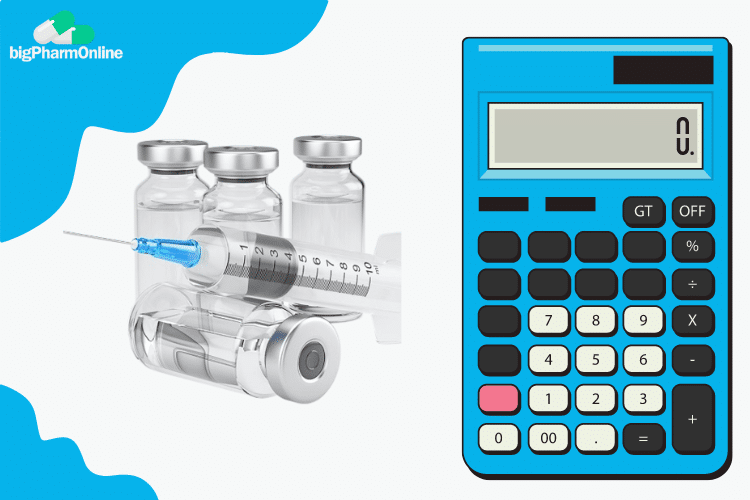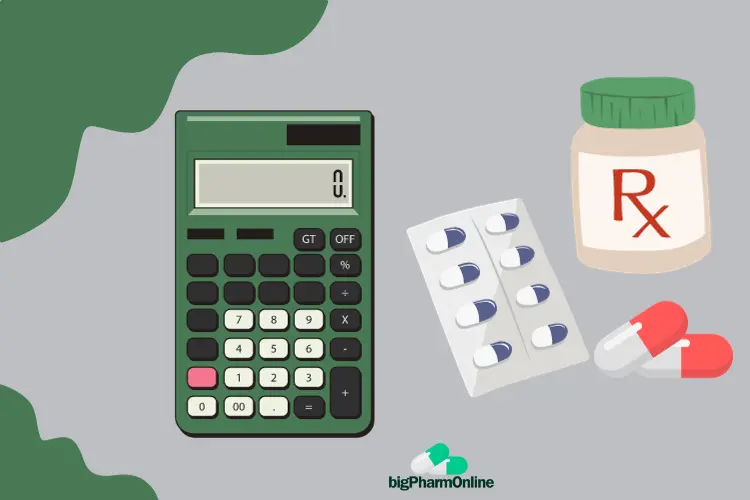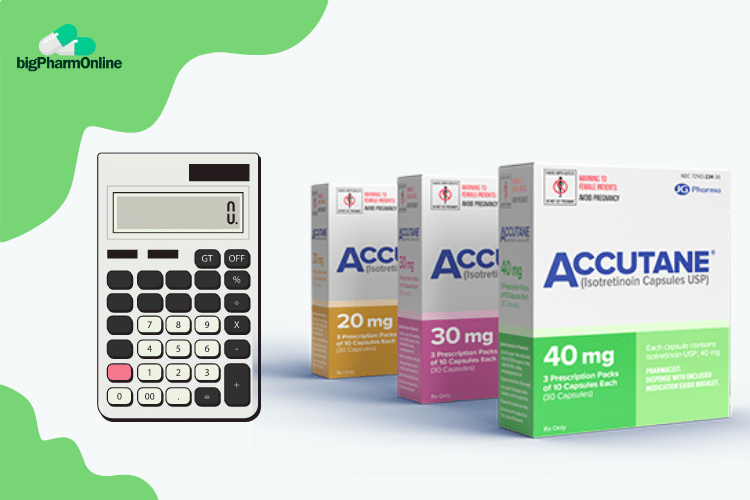Reconstitution Calculator For Powdered Drug

Are you presented with a powdered drug and you’re not sure of the right volume of diluent to add to obtain the desired concentration?
Don’t worry, our reconstitution calculator for powdered medications can help you ascertain this. When it comes to drugs, it is crucial that the correct concentration is introduced into the body.
Overly diluting a drug can render it ineffective, thereby resulting in the failure of therapy. Also, adding too little diluent to a drug powder may deliver a highly concentrated solution which can cause potential harm to the patient.
Hence, the correct volume of diluent must be added to the right quantity of drug powder to obtain a solution of the desired concentration.
How to use this Calculator
- Enter the mass of the powdered drug and select the appropriate unit (mg, mcg, ng).
- Enter the desired concentration of the drug solution you want to make and also select the correct unit (mg/ml, mcg/ml, ng/ml)
- Click the calculate volume button to obtain the volume of diluent you must add to your powdered drug to obtain your desired drug concentration.
Reconstitution Calculator
About Our Drug Reconstitution Calculator
The drug reconstitution Calculator is a simple and easy-to-use tool programmed to make the process of mixing powdered drugs to obtain an appropriate concentration easy.
It receives input as numbers and allows you to choose the weight of the powdered drug in assorted units such as milligrams (mg), micrograms (µg), and nanograms (ng).
It also allows you to select the desired unit for the drug concentration you want. Its output is not limited to matching units only, which means you can keep the weight of your powdered drug in mg and its concentration in ng/ml and still get the correct volume of diluent calculated for you.
The result of the calculations is displayed in a very easy-to-understand format. However, the unit of the calculated volume of diluent to be added to a powdered drug is kept in milliliters (ml) only.
What is Drug Reconstitution?
Drug reconstitution is simply the process of adding liquid to a powdered drug to form a solution with a definite concentration for administration.
The concept of drug reconstitution can be likened to the process of preparing a cup of instant coffee.
Instant coffees often come as dry powder or granules which you then mix with hot water to obtain your hot cup of coffee.
Another common example of drug reconstitution is the mixing of powdered suspensions for children.
You simply add water to create a liquid form that can be easily drawn out and administered using a syringe.
The Formula for Calculating Reconstitution
To calculate drug reconstitution, you need to have values for at least two out of the three necessary parameters in the reconstitution formula. This formula is:
Volume of Diluent = Drug mass / Reconstitution Concentration
The three necessary parameters are:
- Drug mass: which is the weight or quantity of the dry powdered drug. This can be measured either in grams, milligrams, micrograms, nanograms, etc.
- Reconstitution concentration: this is the strength of the resulting solution. It gives a measure of how much drug is present in a given volume of the solution. It can be measured in g/ml, mg/ml, µg/ml, ng/ml, etc.
- Volume of diluent: this represents the volume of liquid to be added to the powdered drug to obtain a given drug concentration. It can be measured in liters, milliliters, deciliters, centiliters, etc.
When a drug is prescribed, the desired concentration is often stated on the prescription. Other information such as the weight of powder can be seen on the vial or leaflet.
So with these two pieces of information available, all you need to do is figure out the right amount of diluent to be added, and that’s where our calculator comes in.
To obtain the reconstitution concentration, all you need to do is rearrange the parameters in the formula such that:
Reconstitution concentration = Drug mass / Volume of diluent.
The result of the calculation will now be a ratio of the weight of the powdered drug to the volume of the solution. If weight is in mg and volume in mL, the resultant concentration will be in mg/mL.
How to Calculate Reconstitution for Powdered Drugs
You can calculate reconstitution either automatically using our tool or manually by using the formula. To manually calculate reconstitution, you need to use the formula below.
Volume of Diluent = Drug mass / Reconstitution Concentration
Write down the formula on paper and substitute each parameter with the actual value.
For example, if you were to reconstitute 1000 mg of a powdered drug to obtain a concentration of 10 mg/mL.
The drug mass here is 1000 mg and the reconstitution Concentration is 10 mg/mL. Substituting these values in the equation above will give
Volume of diluent = 1000 mg / 10 mg/mL.
Volume of diluent = 100 mL.
So, to obtain a drug with a Concentration of 10 mg/mL, you need to add 100 mL of the diluent to 1000 mg of the dry powdered drug and mix to form a solution.
Check Out: Infant Tylenol Dosage Calculator
Frequently Asked Questions
What diluent is recommended for reconstitution?
The recommended diluent for reconstitution will depend primarily on the specific drug being reconstituted. As such, it is important that you carefully read the instructions provided on the drug label or leaflet provided by the manufacturer and follow them accordingly.
However, the common diluents used for drug reconstitution include sterile water for injection, bacteriostatic water, sterile normal saline solution, 5% dextrose in water, plain 1% lidocaine, etc. Sterile or purified drinking Water is often used to reconstitute most oral suspensions.
Which solution is most commonly used for reconstitution?
The most commonly used solution for reconstitution is sterile water for injection.
What is the difference between reconstitution and dilution?
Reconstitution is the process of adding liquid to a powder to form a solution of known concentration while dilution is the process of adding a liquid to a concentrated stock to produce a liquid that is less concentrated than the stock.
Can we use normal saline as water for injection?
You should only use normal saline as water for injection if it is specifically recommended by the manufacturer as evident on the drug label. If this is not the case, you should avoid using it.
Improper use of normal saline solution as diluent to reconstitute medications can cause an infusion-site reaction [1, 2]. This is usually a result of the reconstituted solution being of higher concentration (hyperosmolar) than the surrounding cells. It can result in swelling, redness, pain, phlebitis, etc.
Also, using normal saline as a diluent for reconstitution can produce the solution around or at its saturation point. This can make crystals form within the resulting solution which can become a problem when administered via IV push [3]
Should reconstituted Solutions be refrigerated?
It is recommended that reconstituted drug solution be used immediately. However, it can be stored for up to 3 days if refrigerated between 2° C and 8° C (36° F and 46° F). Always read and follow the instructions stated on the drug label by the manufacturer.
When should a drug be discarded after reconstitution?
How soon before you discard a reconstituted drug depends on the storage condition and manufacturer’s instructions. If the reconstituted drug was stored at room temperature, you should discard it after 24 hours. If refrigerated, it can stay for 2 to 3 days.
Reconstituted oral suspensions can stay for 5 to 14 days if properly stored. It is very important that you follow the manufacturer’s instructions regarding use and storage.
References
- Nowobilski-Vasilios A and Poole SM. Development and preliminary outcomes of a program for administering antimicrobials by i.v. push in home care. Am J Health Syst Pharm. 1999; 56(1):76-9.
- Robinson DC, Cookson TL, Grisafe JA. Concentration guidelines for parenteral antibiotics in fluid-restricted patients. Drug Intel Clin Pharm 1987; 21:985-989.
- McEvoy GK, ed. Handbook on injectable drugs. 19th ed. Bethesda, MD: American Society of Health-System Pharmacists, Inc; 2017:216.
Was this helpful?
About the Pharmacist
Pharm. John Mark (BPharm) is a licensed pharmacist with over 6 years of experience spanning clinical, community, and hospital pharmacy settings.
His wealth of experience and expertise makes him your knowledgeable and go-to source for all pharmacy and medication-related questions.









